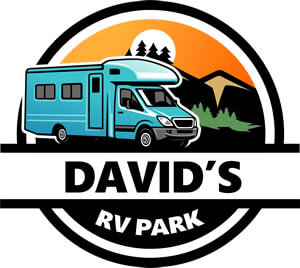
Driving an RV opens up endless possibilities for adventure, but it also comes with unique challenges that can catch even experienced drivers off guard. Whether you're planning a weekend getaway or an extended road trip through the Lone Star State, mastering RV driving skills is essential for a safe and enjoyable journey.
This comprehensive guide will walk you through everything you need to know about RV driving, from pre-trip preparations to navigating tricky situations on the road. You'll discover practical techniques for handling your RV with confidence, plus valuable insights for planning your Texas adventure.
Before hitting the road, familiarize yourself with your RV's specifications. Write down the height, width, length, and weight, and keep this information easily accessible. Many bridges, tunnels, and parking areas have restrictions that could affect your route.
Most RVs range from 8 to 12 feet in height, but some can exceed 13 feet. Width typically falls between 8 and 8.5 feet. Knowing these measurements helps you avoid costly mistakes and dangerous situations.
Walk around your RV and check for any obvious issues. Inspect tires for proper inflation and wear patterns. Ensure all lights are working, including brake lights, turn signals, and hazard lights. Check that your mirrors are properly adjusted and clean.
Don't forget to secure all loose items inside the RV. Items that seem stable while parked can become dangerous projectiles during sudden stops or turns.
RV-friendly routes aren't always the same as car routes. Use specialized RV GPS systems or apps that account for your vehicle's size and weight restrictions. Research rest stops, fuel stations, and overnight parking options along your route.
When planning a trip to Texas, consider the state's diverse terrain and weather conditions. Summer temperatures can be extreme, while winter weather in northern regions may create challenging driving conditions.
RVs require more time and distance to accelerate and brake compared to regular vehicles. Start gently to avoid jarring passengers and prevent items from shifting inside. When stopping, begin braking earlier than you would in a car, applying steady pressure rather than sudden stops.
The increased weight of an RV means momentum works against you. Practice smooth, gradual movements to maintain control and passenger comfort.
RVs have a much larger turning radius than cars. When making turns, swing wider than usual to prevent the rear of your RV from hitting curbs, signs, or other obstacles. This is especially important when navigating tight campground roads or city streets.
Before turning, check your mirrors to ensure you have adequate clearance. Take corners slowly and be patient – rushing leads to accidents.
Maintain a safe following distance of at least 8-10 seconds behind the vehicle ahead of you. This gives you adequate time to react to sudden changes in traffic conditions.
When changing lanes, signal early and check your blind spots carefully. RVs have significant blind spots, so consider installing additional mirrors or blind spot monitoring systems. Make lane changes gradually, giving other drivers time to react to your movements.
RVs are more susceptible to wind due to their size and profile. Crosswinds can push your RV out of its lane, while headwinds reduce fuel efficiency and affect handling. When driving in windy conditions, reduce your speed and maintain a firm grip on the steering wheel.
If winds become too strong, find a safe place to pull over and wait for conditions to improve. It's better to arrive late than not at all.
Going uphill requires more power and may cause your RV to slow down significantly. Use the right lane and turn on your hazard lights if you're traveling much slower than traffic. Don't be afraid to pull over at designated areas to let faster traffic pass.
When descending hills, use your brakes sparingly to prevent overheating. Instead, downshift to a lower gear and let engine braking help control your speed. Stop at brake check areas if available to inspect your brakes and let them cool down.
Backing up an RV requires patience and practice. Use a spotter whenever possible – someone outside the RV who can guide you and watch for obstacles. Develop hand signals with your spotter before you begin backing up.
Take your time and make small adjustments. It's better to pull forward and reposition than to force a tight backing situation. Practice in empty parking lots before attempting to back into campsites.
Proper mirrors are crucial for safe RV driving. Standard vehicle mirrors aren't adequate for RVs. Install extended mirrors or towing mirrors that provide a clear view of your vehicle's sides and rear.
Consider adding backup cameras, which can be invaluable when parking or navigating tight spaces. Some systems include multiple cameras for comprehensive coverage around your RV.
Two-way radios or cell phones help you stay in contact with your spotter or other vehicles in your group. Establish communication protocols before departing, including what to do if you lose contact.
Carry emergency supplies including extra water, food, first aid kit, tools, and spare parts. Include items specific to RV travel such as leveling blocks, wheel chocks, and electrical adapters.
Smooth, consistent driving improves fuel efficiency. Avoid rapid acceleration and hard braking. Use cruise control when appropriate, but be ready to disengage it when traffic conditions require more active speed management.
Plan your travel during off-peak hours when possible. Heavy traffic forces frequent stopping and starting, which significantly reduces fuel efficiency.
Not all gas stations can accommodate RVs. Look for truck stops or stations with RV-friendly layouts. These typically have longer pump lanes and higher clearances. Apps and websites can help you locate suitable fuel stops along your route.
Texas offers diverse landscapes perfect for RV travel, from coastal plains to hill country. The state has generally RV-friendly roads, but be aware of local regulations and restrictions.
Some Texas cities have specific rules about RV parking and overnight stays. Research local ordinances before arriving at your destination.
Texas offers numerous RV parks and campgrounds, each with different amenities and characteristics. When selecting accommodations, consider factors like hookup availability, site size, and proximity to attractions.
Texas weather can be unpredictable. Summer temperatures often exceed 100°F, making air conditioning essential. Spring and fall generally offer the most pleasant traveling conditions, while winter can bring unexpected weather changes.
New RV drivers often underestimate the learning curve involved. Take time to practice basic maneuvers in safe environments before attempting challenging drives.
Don't let other drivers pressure you into driving faster than you're comfortable with. Maintain a safe speed for your skill level and road conditions.
Exceeding your RV's weight capacity affects handling, braking, and tire wear. Distribute weight evenly and avoid overloading storage compartments.
Regular maintenance prevents breakdowns and ensures safe operation. Check fluid levels, tire pressure, and other critical systems regularly.
Start with short, local trips to build confidence before attempting longer journeys. Practice specific skills like backing up, parking, and navigating tight spaces in controlled environments.
Consider taking an RV driving course if you're new to RV travel. Many organizations offer training programs that can significantly improve your skills and confidence.
Join RV clubs or online communities where you can learn from experienced drivers. These groups often share valuable tips and route recommendations.
Texas offers incredible diversity for RV travelers. From the Gulf Coast beaches to the Hill Country wineries, there's something for every interest.
Plan your itinerary with RV-friendly stops and attractions. Many Texas state parks offer excellent RV facilities and access to natural attractions.
Consider the timing of your visit. Spring wildflower season and fall weather create ideal conditions for RV travel, while summer heat can be challenging.
Mastering RV driving takes practice, patience, and preparation. Start with these fundamental techniques and gradually build your skills through experience. Remember that every expert RV driver was once a beginner, and the key to success lies in taking your time and prioritizing safety.
The freedom and adventure that RV travel provides make the learning process worthwhile. With proper preparation and technique, you'll soon be navigating roads with confidence and enjoying all the benefits of the RV lifestyle.
If you're interested in an RV park in Pleasanton, TX, contact David's RV Park today to book now. Their experienced staff can help you plan your Texas adventure and provide the comfortable accommodations you need for your journey.
